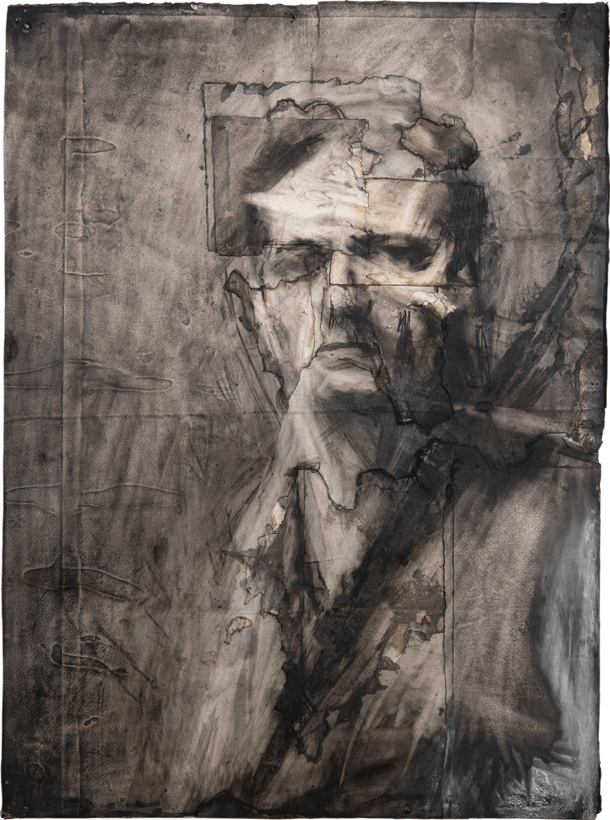Frank Auerbach’s 1958 Self-Portrait confronts viewers with roughly treated paper that has been torn and patched, its repeated erasures and reworkings lending the artist’s visage a phantom yet piercing quality. The shape of the eyes, mouth, and nose are exquisitely rendered, but the face’s inscrutable gaze remains the artist’s secret. The portrait was created with charcoal, a Renaissance medium used for the underdrawings of paintings, and it is with charcoal that Auerbach pushed drawing beyond conventional limits.
Auerbach was in his late 20s when he made this self-portrait. He is now 92 and is still producing both paintings and drawings of uncommon verve. Yet never was his work quite so classically figurative as in the early charcoal portraits he completed between 1956 and 1962. Seventeen of these drawings, along with six paintings made during the same period with the same sitters, are the subject of “Frank Auerbach: The Charcoal Heads,” which goes on display next Friday at the Courtauld Gallery, in London.

Born in Berlin in 1931, Auerbach was seven when his German-Jewish parents sent him to school in Kent, England, to escape the rise of Nazism. He would later learn that his parents were killed in the Holocaust. At 16, Auerbach left Kent for London, where he began to study art. In 2009 he told an interviewer about those early years in the bombed-out city. “There was a curious feeling of liberty about,” Auerbach said, “because everybody who was living there had escaped death in some way. It was sexy in a way, this semi-destroyed London.”
The Courtauld’s deputy head, Barnaby Wright, worked closely with Auerbach on the “Charcoal Heads” exhibition. Back in 2009, Wright curated another exhibition at the Courtauld of Auerbach’s postwar building-site paintings, which he also made in the 1950s and 1960s. “I thought at the time how wonderful it would be to one day mount an exhibition of this parallel body of work,” Wright tells me. “That sense of a sort of rough and half-ruined landscape being turned into a new building has a kinship with these portraits. The success of their images and their vitality is so clearly won through a difficult process of creation. So I think for him destruction and creation are quite close to one another.”

Auerbach has always regarded his large-scale drawings, both these early ones in charcoal and later ones done in graphite, as on par with his paintings and part of a similar creative process. In fact, some of the charcoal heads in the Courtauld exhibition were included in Auerbach’s second one-man show, in 1957, at the Beaux Arts Gallery, in Mayfair.
“In terms of an artist who works and reworks the drawings so hard that the paper breaks and you get this really heavily worked surface, it’s very difficult to find someone quite akin,” Wright says. “One perhaps thinks of something like the way Michelangelo drew the Crucifixion in his late Crucifixion drawings and reworks the sheet so it’s almost to the point of illegibility, but just retaining its vitality. Ultimately, I think what Auerbach wanted to do is bring out an image that is as alive as the person who is sitting in front of him.”
“Frank Auerbach: The Charcoal Heads” will be on display at the Courtauld Gallery, in London, from February 9 to May 27
Tobias Grey is a Gloucestershire, U.K.–based writer and critic, focused on art, film, and books


